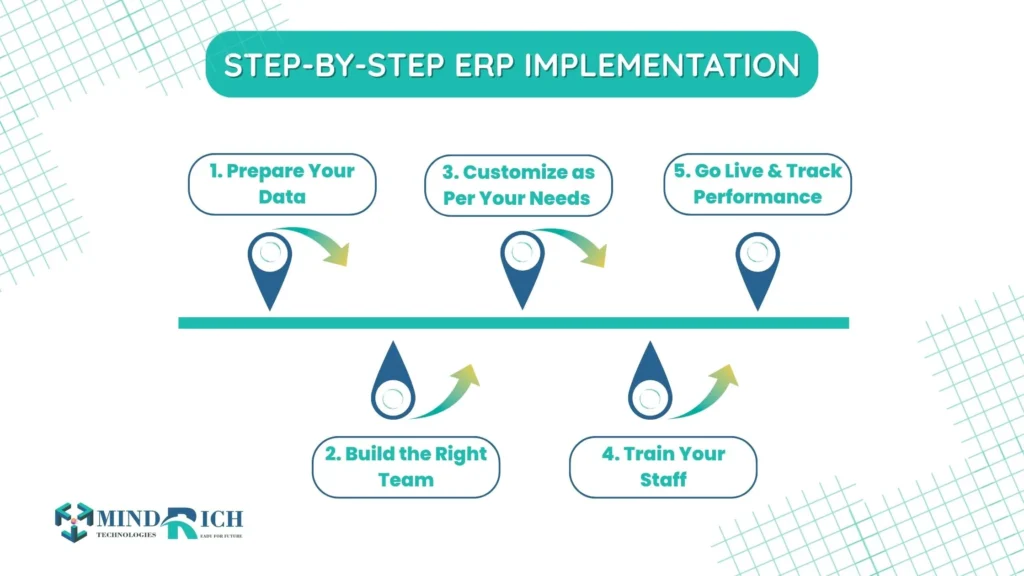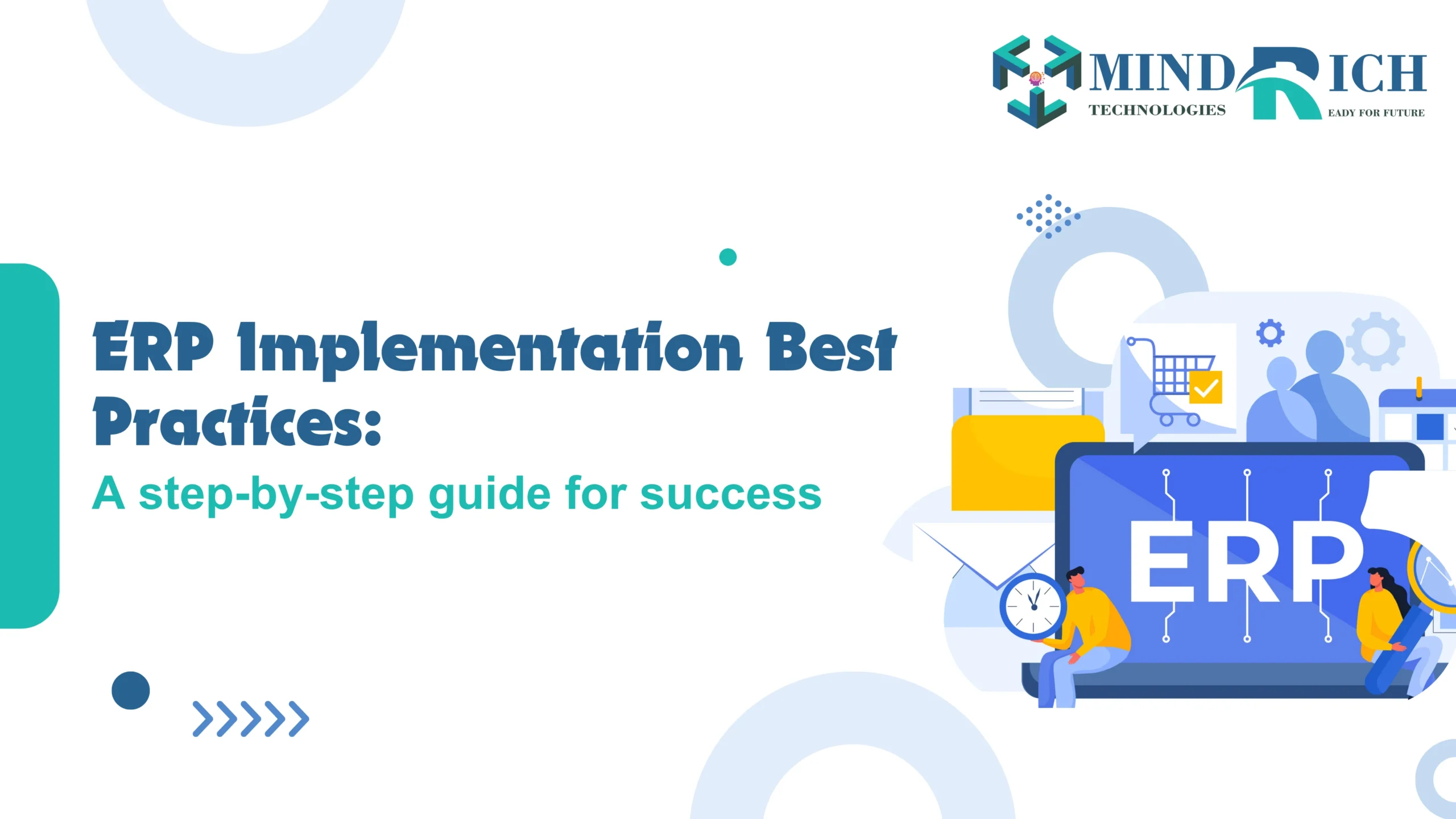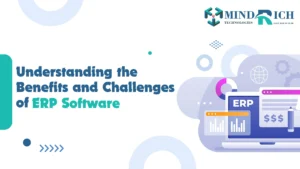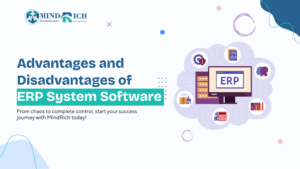ERP Implementation system is one of a very transformative and complex projects that a business can do. It is not only about installing software, it is about restarting business processes, managing changes and adopting a comprehensive user. It is important to follow the best practices for success and to avoid common problems such as budget overran, time limit missing and low user satisfaction. This blog will guide you about best ERP implementation practices and give you the top tips that will help you land the best solutions.
In today’s market most businesses are trying to improve how they work. And to do that, many of them are already using ERP systems. ERP stands for Enterprise Resource Planning. It is a kind of software that connects different parts of a business like sales, purchase, accounts, inventory, HR and more all in one in an automatic system.
But as we know, just buying any ERP system is not enough either you are implementing Odoo, Zoho, SAP or any other famous ERP System. The most important part is how you implement it correctly. In case, If the ERP is not set up properly, it can create more troubles instead of solving them. That’s why a clear plan and accurate steps are always needed for a successful ERP implementation for your business.
So, in this blog I will share some simple tips and useful steps that can help your business to implement ERP systems smoothly. These best and helpful practices will make the process of implementation more easier. And it will increase the chances of long-term success of your business.
Whether it’s your first time using an ERP or you are just switching from an old system to the new one, this guide will help you to move in the right direction.
Understanding ERP Implementation
Now, let’s clear one thing first — what does ERP implementation mean in simple words? Many people hear the term ‘ERP implementation’ but they actually don’t know what all it includes.
Basically, ERP implementation is the process of bringing a new ERP software into your business. It’s not just about installing it. It also includes some major steps like putting your company’s data into the system, organizing it up according to your business requirements, training your team and making sure everything works smoothly and effectively.
This process will help your business work better like saving time, reducing mistakes and keeping all daily tasks in one place. But as we know, the ERP system is not a magic button. It takes time, effort and teamwork.
Think of it like shifting from your manual work to a smart system. It makes life easier but only if it’s done in the right way with proper and smart planning.
Also Read: What is Enterprise Resource Planning?
Plan Before You Start
Now, before you start working on an ERP system, it is very important to plan things properly in the right way. Because without planning, the whole process can become confusing and hard.
Firstly, understand why you even need an ERP system for your business. What problems do you want to solve? Maybe your team is using too many manual tasks or your business data is not properly organized. Once you know all your reasons then set clear goals. For example, improve accountings, reduce stock errors or track customer orders appropriately.
The next step is to discuss it with all departments. Ask them what they demand from the ERP. Every team works differently, so it’s important to listen to them too. This will help you to choose the right modules and avoid problems later. Also, decide a timeline. How long will your project take? Which tasks will come first? This will keep everyone focused and avoid delays.
Lastly, get support and advice from your senior management as well. When the leaders are involved and active, the team will also work seriously. Because, ERP is not just an IT project, it’s a team project.
So, before you even touch the software, make sure your goals are clear, your team is ready and your plan is simple for your business.
Step-by-Step ERP Implementation
A successful ERP implementation needs a proper and beneficial step-by-step process. Here are these 5 simple steps that make the journey easier and better for you:

1. Prepare Your Data
Before even starting the ERP system, check your existing data. Remove errors, duplicate entries and old records which are not useful for your business anymore. Clean data helps avoid issues while implementing and makes the system works better.
2. Build the Right Team
Make a small team from every different department. Include those people who understand daily tasks correctly. These teams will help in giving feedback, testing and supporting others during the process.
3. Customize as Per Your Needs
Every business is different so are the requirements. Don’t try to use the ERP as it is. Set it up according to your company’s needs. Use only those modules which are genuinely useful for your business.
4. Train Your Staff
Training plays a very important role. If your team doesn’t know how to use the system correctly, they will make mistakes or avoid using it. Give small sessions and regular practices to them.
5. Go Live and Track Performance
Lastly, once everything is ready, start using the ERP fully. But don’t stop there. Keep checking if it’s working properly or not. Take feedback, solve small issues quickly and keep improving.
Also Read: Advantages and Disadvantages of ERP System Software
Major Tips for Long-Term Success
Once your ERP system is live, the real journey begins. To make sure it gives you long-term results, here are some useful major tips:
1. Keep Training Regular
Never stop giving training after the first session. As your team grows or new updates come, keep giving small refresh training to your people. This will help your staff stay confident and avoid mistakes.
2. Review System Time to Time
Always take out time to check how the ERP system is working. Are all features being used appropriately? Is something slowing down the work? Regular checks help improve performance of your business operations.
3. Take Feedback From Your Team
Your team uses the system daily. Ask them what problems they’re facing or what could be done better. Their feedback can help you improve the system effectively and make it even more useful.
4. Update When Needed
In today’s modern environment, technology just keeps changing. Don’t stick to the same version for years. If fresh updates or new features are useful for your business, go for them. But test them before implementing them fully.
5. Keep It Simple
Many companies add too many features that no one even uses. Keep your ERP system simple and easy. Use only those modules which your team actually needs. This will keep the system fast and user-friendly.
These small steps will help you to get the most out of your ERP system, even after months or years of using it.
Summing Up
ERP implementation is not just a one-time project, it’s an entire journey that needs planning, patience and smart teamwork. Many businesses make the mistake of hurrying the process or copying what other companies are doing. But as we discussed, every business is different. That’s why real success only comes when you take out the time to understand your business needs and follow each step carefully.
In this blog, we saw how important it is to plan things before even starting them. Then we discussed the step-by-step ERP implementation process from preparing your data to going live and tracking everything. After that, we shared some practical tips that help you to get long-term results from your ERP system.
The main goal of an ERP system is to make your work life easier and faster for your business operations, make less mistakes and put everything just in one place. But this will only happen when the system is implemented correctly and used in the right way.
So, whether you are thinking of starting an ERP or already using it, remember that it’s not just about software, it’s about changing the way your business works. And for that, you need the right mindset, a simple and clear plan and support from your whole team.
At last, with the right approach, an ERP system can become one of the best decisions for your business growth.











